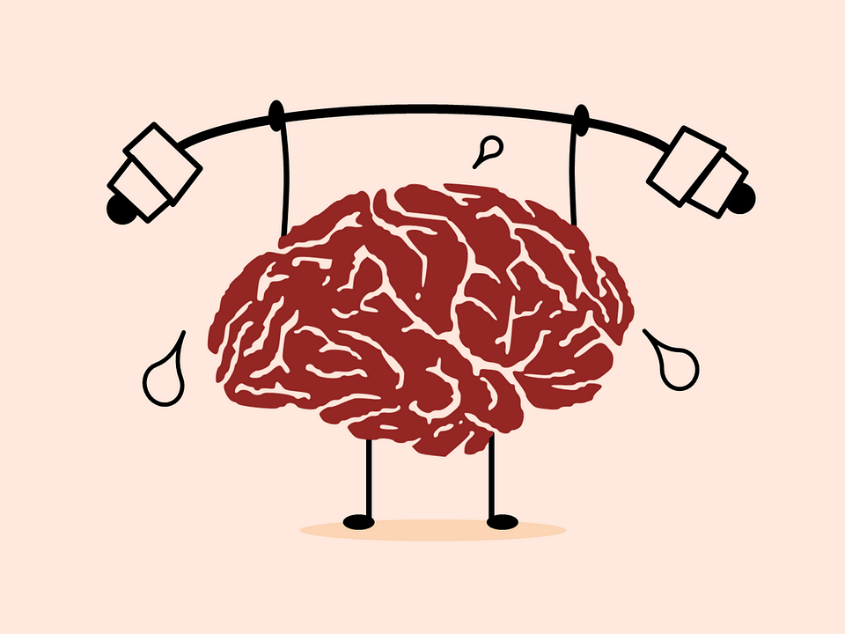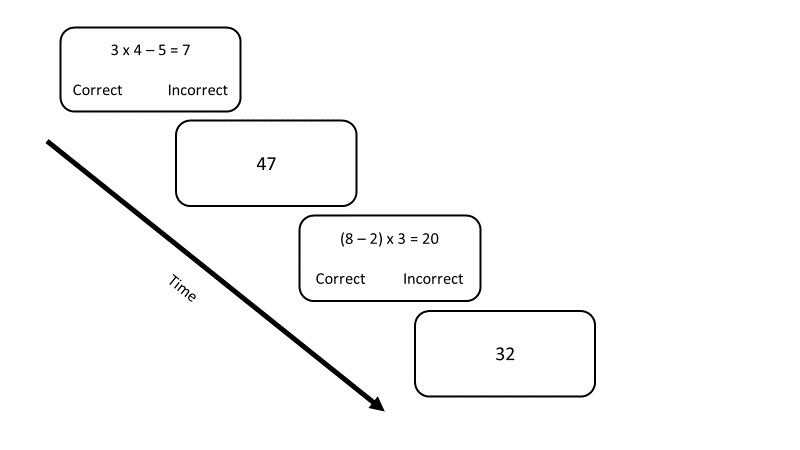
Reference: von Bastian, C. C., & Eschen, A. (2016). Does working memory training have to be adaptive?. Psychological Research, 80(2), 181-194.
If playing challenging yet enjoyable games could improve your ability to concentrate, problem solve, learn, and make decisions, would you want to play them? Would you be willing to pay for these games to obtain the purported benefits? Would you want games like these introduced into public schools to facilitate the development of young minds, especially those that struggle to stay focused in class? I’m guessing you probably answered “yes” to these questions.
Now, how would you feel if scientific evaluation of these claims demonstrated that the games do not actually offer any benefit to cognition? It turns out, people simply get better at the games they play and think this benefit transfers to other situations in which they need to focus, but in reality, it does not. Although there are many programs and apps available to consumers and educators that make promises to improve cognitive performance, empirical data suggests that programs like these are generally not effective. To understand why, first you need to know a bit about working memory.
Working memory is the cognitive system that mentally maintains and processes information relevant to your current goal or task. For example, in order to comprehend this blog post, you have to keep several pieces of information in mind as you read it; maintaining this information while reading new information relies on your working memory. How much information you can keep in mind at once is referred to as your working memory capacity, and larger working memory capacity has been associated with improved performance on measures of general intelligence, novel reasoning, problem solving, complex learning, and reading and language comprehension (1, 2, 3). As a result, research has focused on expanding the capacity of one’s working memory through training.
Training working memory
During computerized training, participants complete tasks that the tax working memory system. These tasks adaptively increase the amount of information that is maintained and processed based on a participant’s performance. For example, a training task may first require a participant to verify whether a math equation is accurate (i.e., process information) and then remember a two-digit number (i.e., maintain information). This process repeats, and after several repetitions the participant recalls all of the two-digit numbers they encountered previously. As a participant’s performance improves on this task, the amount of equations and numbers to remember increases. Adaptive tasks such as these are hypothesized to expand one’s working memory capacity, much like one would expand a muscle’s capacity by increasing the amount of weight it must bear (4).

Hypothetical example of a working memory training task used in von Bastian and Eschen, 2016. Participants must verify whether a math equation is accurate (i.e., process information) and then remember a two-digit number (i.e., maintain information). After several repetitions, the participant attempts to recall all of the two-digit numbers they encountered previously.
The ultimate goal of such training is to improve real-world cognition through increased working memory capacity. For example, comprehension of a reading passage should improve if one could better maintain and integrate important information from across the passage. Unfortunately, the bulk of empirical evidence suggests that adaptive computerized training does not conclusively enhance working memory capacity. In response, the goal of some recent research has been to examine the conditions under which computerized training is effective.
To discover whether computerized training leads to enhanced working memory capacity, adaptive computerized training is often compared to non-adaptive, “low load” training. Researchers have hypothesized that the adaptive increase of training demand (i.e., more information to maintain and process) in response to participants’ performance is the “active ingredient” for improving task performance (and potentially, working memory capacity). However, prior research has not clarified whether training demand must be adaptive to participants’ performance per se or just present different difficulty levels. Two researchers from the University of Zurich aimed to find out.
Does working memory training have to be adaptive?
To investigate whether working memory training needs to be adaptive to participants’ performance, researchers Claudia C. von Bastian and Anne Eschen (2016) randomly 130 assigned participants to one of four groups. Three groups each completed a different type of computerized working memory training: adaptive (i.e., memory and processing demands increased or decreased automatically based on participants’ performance), self-selected (i.e., participants chose when to increase or decrease memory and processing demands), or randomized (i.e., participants were randomly given memory and processing loads of varying degrees of demand). A fourth group served as an active control group: their training consisted of answering trivia questions of adaptive difficulty to induce the expectation of working memory improvement without actually improving the working memory system. All participants completed twenty 30-45-minute training sessions over four weeks. By implementing training in such a manner, the researchers could determine whether expectation (i.e., placebo) effects could account for working memory improvement or whether taxing training was required. More importantly, if taxing training was required, the researchers could determine whether it had to be adaptive or simply vary in maintenance and processing demands to be effective.
During pre- and posttests administered before and after training, the groups were measured on several working memory tasks used in training (i.e., to measure practice effects), on several working memory tasks dissimilar to the training tasks (i.e., a measurement of intermediate transfer, or improvement of working memory beyond what was trained), and to several problem solving and reasoning tasks (i.e., a measurement of far transfer, or improvement on complex tasks that would presumably be enabled by enhanced working memory capacity). By measuring working memory capacity, problem solving, and reasoning, the researchers could determine whether training improved only the skills needed for the trained tasks or the working memory system’s overall capacity. Further, the researchers could determine if expanding one’s working memory capacity enabled more effective problem solving and reasoning. The researchers also measured participants’ motivation, effort, and enjoyment to see if the different training programs impacted other factors that may account for working memory and cognitive improvement.
What did they find?
The researchers observed that all participants improved at their training tasks and did not differ in motivation, effort, or enjoyment. There was no improvement for any group on the intermediate or far transfer tasks, suggesting that working memory training did not improve working memory capacity broadly nor enable better problem solving or reasoning. However, there was improvement for the three working memory training groups on their specific working memory training tasks. These results suggest that any improvement due to training was limited only to the specific skills needed in training tasks (and not the working memory system more generally). Importantly, these results also suggest that working memory training does not need to be adaptive to induce skill-specific improvement; training simply must vary in difficulty (either randomly or by participant selection).
These findings are informative in several ways. First, for working memory training to increase skills required for training tasks, training does not necessarily have to be adaptive in maintenance and processing demands, just varied. This knowledge can guide future studies on effective conditions of working memory training as well as how consumer apps and school interventions could be structured. Second, the conditions under which working memory training is effective at enhancing working memory processes or complex cognition are still unclear. Third, members of the public and K-12 education system should be wary of commercial claims of computerized training programs offering broad cognitive enhancement, as conclusive evidence in support of such training is lacking. Finally, these results support conclusions made by other researchers — targeting specific skills in specific domains is a more fruitful path to cognitive enhancement than attempts to enhance cognitive performance more generally (5).
—
Featured Image: Pixabay. Accessed 10/12/18. https://pixabay.com/en/mental-health-brain-training-mind-2313426/
Additional References:
(1) Conway, A. R., & Kovacs, K. (2013). Individual differences in intelligence and working memory: A review of latent variable models. Psychology of Learning and Motivation, 58, 233-270.
(2) Engle, R. W., Tuholski, S. W., Laughlin, J. E., & Conway, A. R. (1999). Working memory, short-term memory, and general fluid intelligence: A latent-variable approach. Journal of Experimental Psychology: General, 128(3), 309-331.
(3) Unsworth, N., Redick, T. S., Heitz, R. P., Broadway, J. M., & Engle, R. W. (2009). Complex working memory span tasks and higher-order cognition: A latent-variable analysis of the relationship between processing and storage. Memory, 17(6), 635-654.
(4) Melby-Lervåg, M., & Hulme, C. (2013). Is working memory training effective? A meta-analytic review. Developmental Psychology, 49(2), 270-291.
(5) McCabe, J. A., Redick, T. S., & Engle, R. W. (2016). Brain-training pessimism, but applied-memory optimism. Psychological Science in the Public Interest, 17(3), 187-191.
